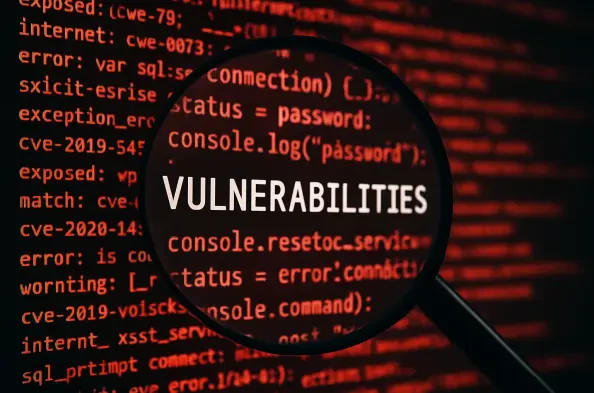The landscape of cybersecurity continues to evolve as vulnerabilities emerge, affecting even the most robust systems. The discovery of security flaws in SAP GUI for Windows and Java and in Citrix systems highlights the ongoing threat to sensitive information and operations. Recent research reveals that these patched vulnerabilities, if exploited, could lead to unauthorized access to sensitive data or enable session token theft via insecure input storage or insufficient validation protocols. The vulnerabilities identified, CVE-2025-0055 and CVE-2025-0056, along with Citrix’s CVE-2025-5777, underscore the importance of proactive security measures in safeguarding data integrity and confidentiality. These flaws demand vigilant assessment as organizations continue to rely on advanced technological solutions for their operations. A comprehensive understanding of these weaknesses and implementing effective prevention strategies is crucial for any enterprise navigating the digital age.
Investigating SAP GUI Vulnerabilities
Cybersecurity experts have uncovered critical vulnerabilities within SAP’s Graphical User Interface. SAP GUI’s input history feature, designed for convenience, unexpectedly posed significant security risks. Pathlock’s research highlighted the insecure storage of user input histories in both Java and Windows versions. These historical inputs, stored locally on devices, include data ranging from usernames and social security numbers to more sensitive internal SAP data. The exploitation risk arises from this information being stored using weak encryption methods or, in some cases, unencrypted Java serialized objects. Attackers could access this data by gaining administrative privileges or accessing user directories, which heightens the threat to data confidentiality. SAP has addressed these vulnerabilities by releasing patches, but the flaw’s exposure illustrates the critical need for robust data encryption protocols and careful management of local storage practices. As computer security advances, the safeguarding of sensitive information must consider how it is stored and accessed to prevent unauthorized disclosures.
Understanding Citrix Vulnerability Impact
Citrix has confronted a significant security threat identified in its NetScaler ADC through CVE-2025-5777. This vulnerability, rated critical due to its CVSS score, arises from insufficient input validation processes, permitting attackers unauthorized access through session tokens. This shortcoming enables bypassing authentication protections, particularly when NetScaler is configured as a Gateway or AAA virtual server. This capability directly compromises the security integrity of susceptible appliances. Kevin Beaumont, highlighting similarities to a previous flaw, dubbed this vulnerability Citrix Bleed 2. Although the specific flaw has been addressed through new versions such as NetScaler ADC 14.1-43.56, there remain concerns about how past vulnerabilities continue to inform current potential threats. As vulnerabilities are patched, ensuring users transition from unsupported versions to stable ones is vital for maintaining security protocols. Citrix urges vigilant updates and adherence to security measures, emphasizing terminating all active sessions post-upgradation and shifting away from end-of-life versions to thwart potential exploitation risks.
Assessing Threat Landscape and Mitigation Strategies
Addressing vulnerabilities is not just about immediate patches but understanding the implications within a broader technological context. Beyond immediate fixes, enterprises must prepare for potential threats posed by digital attackers. The exposure risk extends beyond SAP GUI and Citrix systems, reflecting a growing landscape of vulnerabilities. Security strategies must evolve to encompass comprehensive input history management and rigorous session validation measures. Organizations are advised to disable input history features in SAP systems, further securing data by removing stored files from local directories. In the case of Citrix, proactive session management is required, complemented by regular version updates. Pathlock’s identification of a foundation for third vulnerabilities within SAP servers and ReliaQuest’s observations indicating exploitation behaviors showcase the dynamic nature of cybersecurity threats. Vigilance and adaptability are paramount; organizations must remain alert to emerging threats while refining existing security protocols, ensuring protection not only for current systems but anticipating future vulnerabilities.
Future Cybersecurity Considerations
Cybersecurity specialists have identified severe security flaws in SAP’s Graphical User Interface (GUI). The input history feature, initially implemented for user convenience, has revealed considerable security vulnerabilities. Research conducted by Pathlock pointed out that both the Java and Windows versions of SAP GUI inadequately secured the storage of user input histories. These inputs, stored locally, can consist of data such as usernames, social security numbers, and even more sensitive internal SAP information. The danger lies in the fact that this data is sometimes stored using weak encryption techniques or, occasionally, as unencrypted Java serialized objects. If attackers acquire administrative rights or can access user directories, they could exploit these vulnerabilities, posing a significant threat to data confidentiality. SAP has reacted to these security breaches by issuing patches, but these incidents underscore the pressing need for strong data encryption and meticulous local storage management. As cybersecurity progresses, it is essential to safeguard sensitive data, ensuring that storage and access protocols prevent unauthorized disclosures.






